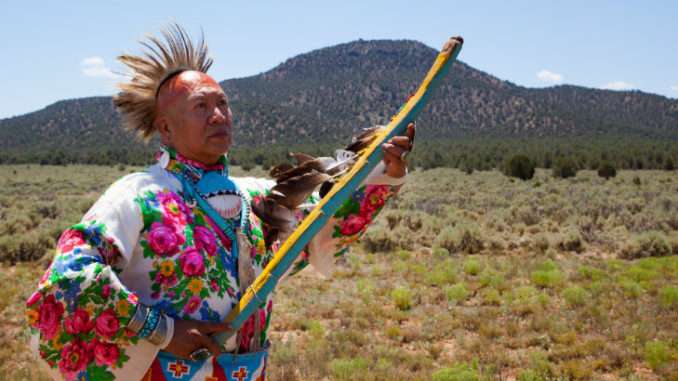
More than five million people visit the Grand Canyon each year. It’s one of the world’s most popular tourist destinations, yet the public knows next to nothing about the indigenous nation living on its floor.
Geography has a lot to do with it: the territory of the Havasupai Tribe is only accessible by helicopter–or, for those more daring, through an arduous 10-mile walk to the canyon’s floor. But it’s also by choice: even though the Havasupai now survive on tourism, they don’t make most of their knowledge and customs available to the public.
Unfortunately, that isolation has failed to protect them from the threat of uranium mining. Millions of gallons of clean water that once sat beneath the tribe’s sacred site of Red Butte and directly above an aquifer that feeds the tribe’s main source of water, has fallen into the depths of the Canyon Mine. According to USGS reports, that water now contains dangerously high levels of uranium and arsenic. Most of the contaminated water has been hauled offsite in trucks or evaporated in an already water-starved climate, says Alicyn Gitlin, Program Manager for the Sierra Club’s Grand Canyon Chapter.
The uranium mine represents a major threat to the tribe’s cultural practices and the traditional ecological medicine knowledge held by the nation’s medicine people.
Historically, Havasupai medicine people served as an advisory council to the chief. “Any decisions that affected the entire tribe were sent through the medicine people for spiritual input before decisions were made,” Uqualla, a Havasupai medicine man and spiritual traditionalist, told IC. “There is no longer direct guidance over political decisions, but there is still a constant flow of spirituality held by individuals, which is reinforced, reignited, rejuvenated, and re-divined by a source.”
Medicine people continue to serve as emissaries for the Mother Earth in their practices today, Uqualla said. The tribe seeks to protect the specifics of Havasupai medicinal collections and spiritual practices from the public to avoid misunderstandings and potential dangers that come from incorrect replication by non-spiritual practitioners. Unlike Western medical traditions, the Havasupai’s spiritual medicine practices do not solely focus on applying generic treatments for anyone that suffers from a specific ailment. Rather, in spiritual medicine, the individual “patient” informs these practices and use of medicines.
For example, juniper berries might be considered good for urinary tract infections (UTI’s), kidney stones, and joint pain; the sap of pinon pines can be effective for coughs and sore throats or used externally for wounds, and sage can be used to help with digestion problems, reduction of over-perspiration, depression and memory loss. While the Havasupai recognize these facts, they believe that these medicines also interplay with the individual.
“There is an alchemy with the preparations of medicines,” Uqualla explained. “The alchemy is inclusive of the person in ailment. The collection and preparation of plants is directly connected to the person being healed. It is dependent on the patient’s openness and beliefs to what is coming in during the process. So, the key for spiritual medicine is that it come from a pure place, a pure collection method, and a pure intention.”
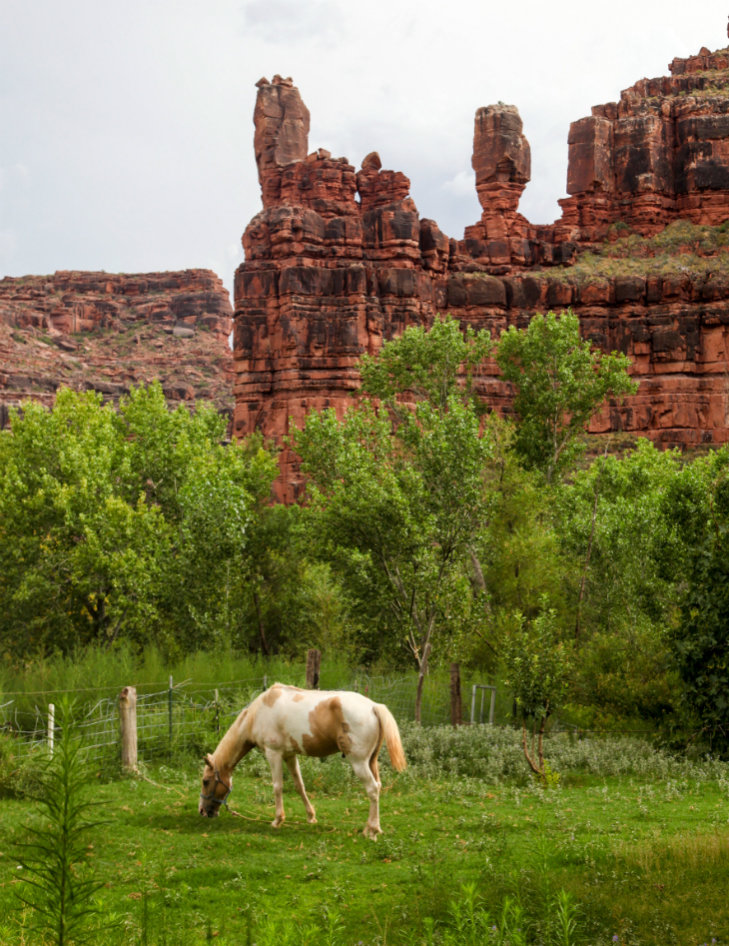
In sharing this wisdom, Uqualla hopes to benefit the broader, non-indigenous or non-spiritual population and to communicate how these lands continue to serve the indigenous peoples in the area.
Throughout his practices, Uqualla uses a variety of sage, juniper and pinon pine, as well as berries, acorns, talons, bones, feathers, cones, rocks, and plants that are found in the region of Red Butte, while incorporating the essence of these objects and other elements to bring strength to the healing process, he explained.
In Havasupai culture, the desire to safeguard stories and practices is also born from a concern that their practices will be appropriated and applied in an inappropriate manner. “When it comes to sharing information, you want to share elements that will bring clarity, illumination, healing, and well-being for people,” Uqualla said. “Because our practices are very individualized, it comes with risk when a major non-indigenous or non-spiritual demographic sees or reads something and [tries] to replicate, because they are likely to make an incorrect interpretation of it.”
Instead, Uqualla urges those searching for this kind of healing to locate an expert. “Every place in the Mother Earth has a medicine people, and it is important for those looking to benefit from these practices to be able to recognize them.”
Another reason the Havasupai guard their sacred places and practices is due to the greed of those who appropriate their culture.
The Havasupai have experienced their fair share, like most other Native American nations. For instance, the Havasupai now only have access to “traditional use sites” after being forced at gunpoint from their traditional grounds within the Grand Canyon National Park. In a broader context, Indigenous Peoples have been repeatedly subjected to acts of “biopiracy” at the hands of pharmaceutical companies, biotechnology firms and even universities.
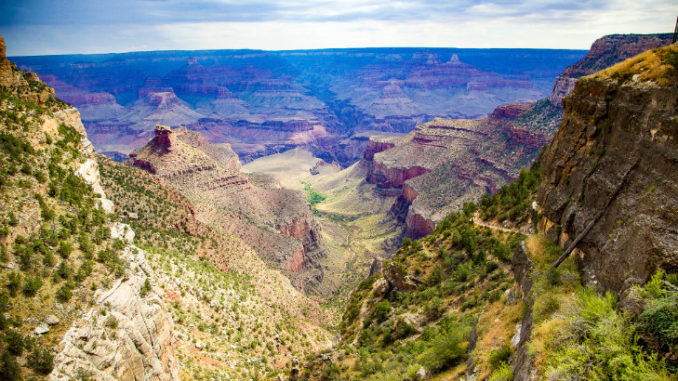
“We have found the only way we can protect a thing that we do not want disturbed is by being very, very silent,” said Rex Tilousi, former Havasupai Chairman. “Not speaking about that painting, that rock, what is behind that rock, because we know what is going to happen to these things if we talk about them. They are going to be destroyed.”
Red Butte serves as a critical example of this appropriation, given that this unique and sacred space in Grand Canyon’s biocultural landscape, is now occupied by a uranium mine.
Owned by Energy Fuels, the Canyon Mine has already contaminated millions of gallons of once clean drinking water beneath the grounds surrounding Red Butte. Now, this contaminated water is being sprayed into the air, trickling into the nearby forest, according to the president of the Sierra Club’s Grand Canyon Chapter, Alicyn Gitlin. All of this is occurring upon traditional and current medicinal collection sites within the sacred land of Red Butte.
The destruction of this land has a history that dates to the late ‘70s, when the Canyon Mine was first being developed by Energy Fuels Resources (EFR). “Without letting us know, EFR had already scraped the ground, the sage, and underneath the dust they destroyed ancient grinding stones, baskets, the pottery work our people traded with other tribes, and even bones,” said Tilousi. “They had scraped away everything getting that place ready for mining.”
After being accused of desecrating sacred land and failing to communicate with the Havasupai before the company started working, EFR denied the sacred nature of the area.
Some 30 years later, Mark Chalmers, the President and COO of EFR, stands behind his company’s claim. When IC interviewed Chalmers last month he commented,
“You know it’s interesting…I built the mine in the ‘80s, and it was interesting because the Red Butte was never brought up as a cultural site back when they built it, but now it has emerged as a cultural site.”
Chalmers said he spoke with a local rancher who ran cattle in the area for 20 or 30 years. “He’s the one who said it.“And I’m not saying this to be derogatory against the Havasupais, because I do respect the Havasupais, but he had never seen Havasupai in that ground until the mine was approved.” [sic]
Chalmers went on to say that he had given some of the Havasupai their first rides to the Canyon Mine, because they had never seen it before. “I’m not saying that some Havasupais wouldn’t consider Red Butte sacred, but it received very little or no attention that I knew of.” [sic]
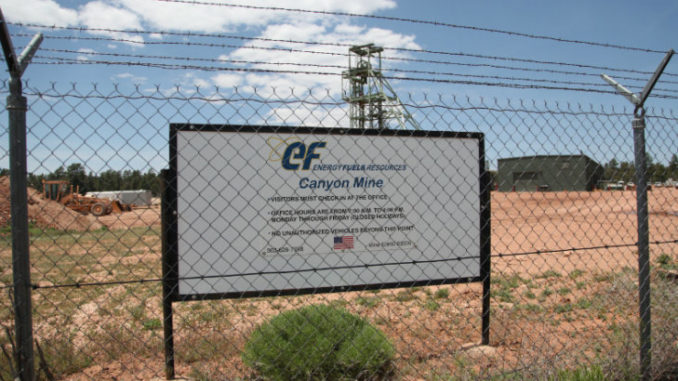
Whether he was aware of it or not, Chalmers’ comment echoes back to a time when the legal doctrine of terra nullius became a popular tool to justify territorial conquest.
The doctrine, which eventually became international law, establishes that any land can be legally obtained if it is found to be unused or unoccupied. The doctrine has been used extensively by governments and companies seeking to take ownership of indigenous lands.
Chalmers’ comment also fails to acknowledge historical transgressions against the tribe. The Havasupai used to have easy access to Red Butte, but that changed when the Havasupai were forcibly removed to make way for the Grand Canyon National Park. Now, they must take a three-hour drive from their reservation to Red Butte…and that’s after a helicopter ride or 10-mile hike out of the canyon.
Regardless of outsider’s interpretations of their own cultural practices, the Havasupai maintain their spiritual connection to Red Butte.
“People complain that we have no documentation of being in the [area], and say such things like, ‘we have never seen them here,’ Uqualla observed. “But animals and plants are still a very profound part of the survival of the Havasupai people and we have been constantly utilizing these lands over generations.”
Due to the way that these collections take place, by one medicine man or woman and at various times of day or night, it is understandable why the rancher would not have noticed any Havasupai.
“Within our tradition and spirituality, these gatherings are not a show of being there to collect in grand ceremony,” Uqualla explained. “It is being there in those private moments to go in and have to communicate with Mother Earth to have permission to take, permission to use, permission to be able to bring in what it is meant for. The whole Grand Canyon rim is a giant apothecary of medicine and this is known by every spiritual group that is in the Colorado River Plateau region.”
The Havasupai still go into the Red Butte and Canyon Mine area too. “Individual medicine entities go out and collect what is needed at times when it is intimate for the Mother Earth and the harvester. This is done in such a subtle way that only an appropriate amount is taken. They wouldn’t see a whole field leveled or harvested,” Uqualla said.
The Canyon Mine could change everything. Even if contaminated water from the mine is somehow unable to make it into the deeper aquifer, several new studies have demonstrated that the mine can still have a negative ecological impact on local plant and animal life.
Medicine people have been in constant concern for the Mother Earth. They bring healing to her, which will bring healing to the people she watches over, Uqualla continued. But, according to many members of the tribe, these collections and practices are now in danger. “How can we get there? If we do get there, do we need special new ceremony? How can we be sure that our sacred spring water isn’t poisoned?”
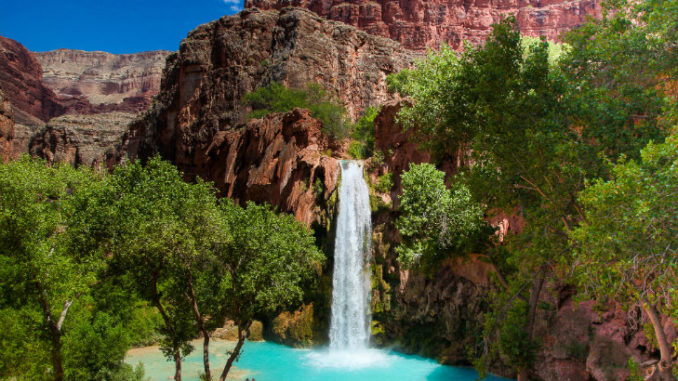
Uqualla also told us that the Havasupai aren’t the only Native American tribe affected by the mine. The grounds in question are also sacred gathering lands for the Navajo Nation, the Hopi Nation, the Hualapai, and other tribes on the Colorado River Plateau.
He maintains that, in the future, medicine people will have to be even more discerning as to what is collected and when it is collected. They will also have to consider alternate preparations and other options to eradicate any negative effects the mine might have on medicine in the area.
Looking toward the future, Uqualla left us with this final thought:
“Everyone that is birthed on this mother earth has dark and light, good and bad, masculine and feminine. Learn how to bring that into a magnificent balance. The Mother Earth stated at the beginning, ‘I will give you what it is that you ask for. Not what you ask for from the language or the voice, but what you put forth in your actions.’
Everything about Mother Earth speaks in symbolism. Learn how to pull from the information given by the surroundings. The medicines of wind, the medicines of the water, the medicines of fire, the medicines of rock. The Mother Earth knows how to take care of itself. And it will take care of itself. It’s going to be the greatest teacher for all of us so go out to her daily and allow for yourself that connection in whatever way you wish that is comfortable for you do so. Even if it is just a step out there. That one moment of total blankness will allow for that infusion of Mother Earth to come through. Allow for yourself to make a connection with the Mother Earth and have her be a constant watcher, healer, teacher, and leader for you.
We are the children of the Mother Earth and every single one of them walk and trash and abuse the earth beneath them. It’s a surface that gives us the ability to walk, talk, breath, sing, dance. And that is important for us to understand. Without that where would we be? We would not be.”
Garet Bleir is an investigative journalist working for Toward Freedom documenting human rights and environmental abuses surrounding uranium mining in the Grand Canyon region. To follow along with interviews and photos highlighting indigenous voices and to receive updates on his series for Toward Freedom and Intercontinental Cry, follow him on Instagram or Facebook.
